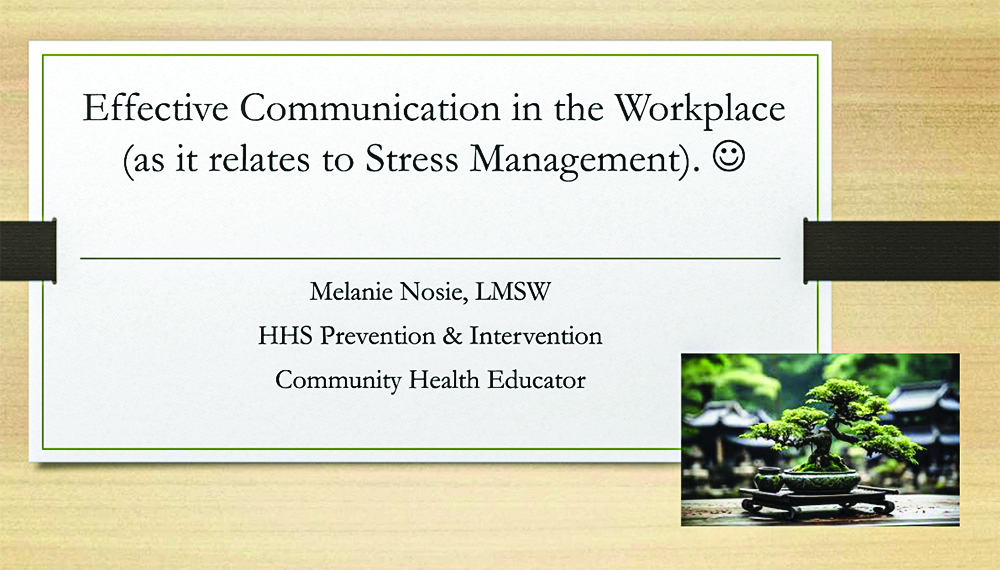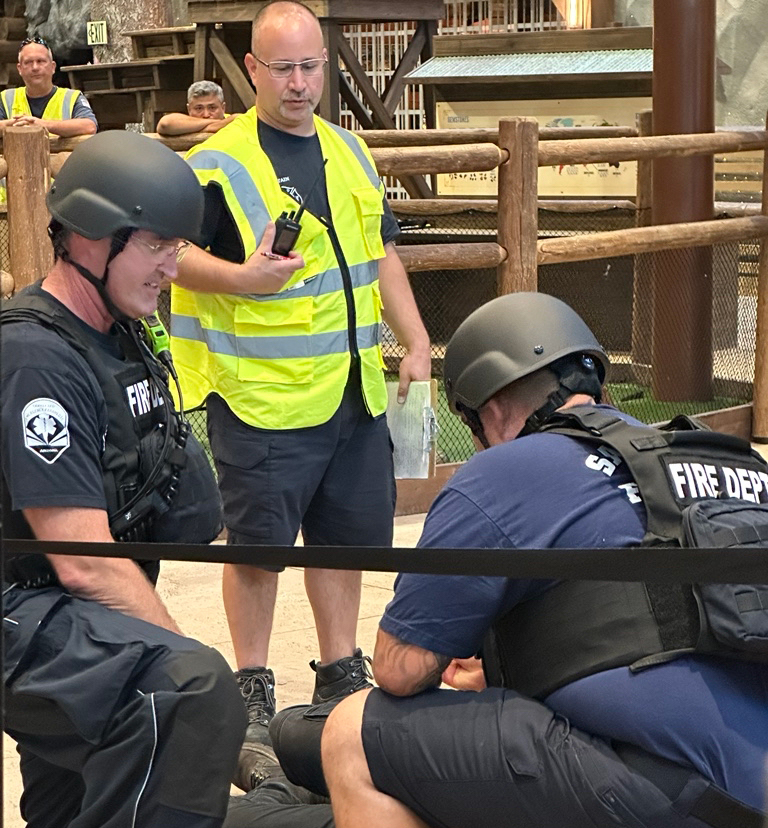VIEWS: 203
September 30, 2024SRPMIC Hosts Webinar on Workplace Communication
“Whether we are management or support staff, we must make sure we are getting the correct message across,” began Salt River Pima-Maricopa Indian Community Health Educator Melanie Nosie, LMSW, in a July 27 webinar on communication in the workplace. More than 100 people participated in the webinar presentation, titled “Effective Communication in the Workplace as It Relates to Stress Management.”
Nosie explained that effective communication in the workplace involves speaking, listening and providing feedback. This allows for collaborations between teams and departments to flow seamlessly while improving productivity. “When there’s communication going back and forth, we have to make sure we’re listening,” said Nosie. “Effective communication creates accountability.”
As the webinar’s facilitator, Nosie shared various methods for communicating effectively in the workplace. “Be mindful of nonverbal communication, such as body language. We also have to remember to give constructive feedback and use positive language,” she said.
When a person’s arms are crossed, that gives the impression that the individual is not listening or paying attention. Negative body language provides the speaker with the feeling that they are not being respected. This can negatively impact communication in the workplace and cause additional stresses. “We want to make sure the receiver of our message receives it well,” said Nosie.
“We all have different skills and backgrounds, [and] we interact with lots of different people. Whether it’s working with people out of our office, collaborating with internal departments, or communicating with people from outside of the Community, we need to be able to achieve a goal at work of clear communication,” said Nosie.
She continued, “A lot of times, conflicts in the workplace happen because of a misunderstanding. It happens when a communication wasn’t effective: One person said this, but the other person heard that. With that, staff may feel disregarded, and that’s not a good feeling. We want to do our best to pay attention to how we communicate; it goes both ways.”
Additionally, if ineffective communication in the workplace goes unchecked, that could result in demoralized employees, unclear department objectives, and a tense environment between staff and management, all of which contribute to an overall unhealthy workplace.
By outlining the negative effects, Nosie was able to highlight the positives of effective communication. Effective communication improves direction for employees, increases employee engagement, strengthens team building and improves the public impression of department(s) in the Community.
“As human beings, when we’re approached and we get frustrated, it’s normal to get defensive, and sometimes we can react with a negative tone of voice,” Nosie said. “We want to make sure we are professional. And if you’re in a field where you must state the facts, then state the facts.”
Nosie concluded the webinar presentation by fielding questions from attendees.







